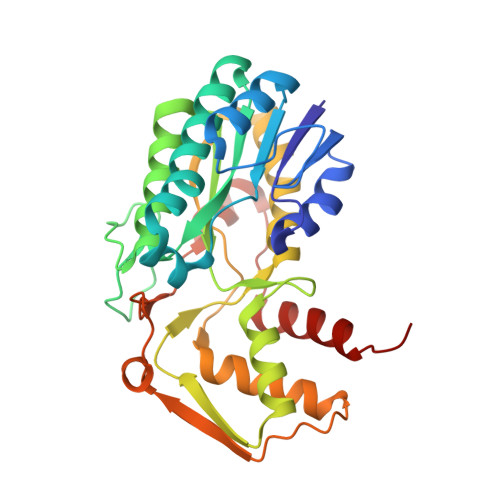Variation on a theme of SDR. dTDP-6-deoxy-L- lyxo-4-hexulose reductase (RmlD) shows a new Mg2+-dependent dimerization mode.
Blankenfeldt, W., Kerr, I.D., Giraud, M.F., McMiken, H.J., Leonard, G., Whitfield, C., Messner, P., Graninger, M., Naismith, J.H.(2002) Structure 10: 773-786
- PubMed: 12057193
- DOI: https://doi.org/10.1016/s0969-2126(02)00770-0
- Primary Citation of Related Structures:
1KBZ, 1KC1, 1KC3, 1N2S - PubMed Abstract:
dTDP-6-deoxy-L-lyxo-4-hexulose reductase (RmlD) catalyzes the final step in the conversion of dTDP-D-glucose to dTDP-L-rhamnose in an NAD(P)H- and Mg2+-dependent reaction. L-rhamnose biosynthesis is an antibacterial target. The structure of RmlD from Salmonella enterica serovar Typhimurium has been determined, and complexes with NADH, NADPH, and dTDP-L-rhamnose are reported. RmlD differs from other short chain dehydrogenases in that it has a novel dimer interface that contains Mg2+. Enzyme catalysis involves hydride transfer from the nicotinamide ring of the cofactor to the C4'-carbonyl group of the substrate. The substrate is activated through protonation by a conserved tyrosine. NAD(P)H is bound in a solvent-exposed cleft, allowing facile replacement. We suggest a novel role for the conserved serine/threonine residue of the catalytic triad of SDR enzymes.
- The Centre for Biomolecular Sciences, The University, St. Andrews, KY16 9ST, Scotland, United Kingdom.
Organizational Affiliation:



















